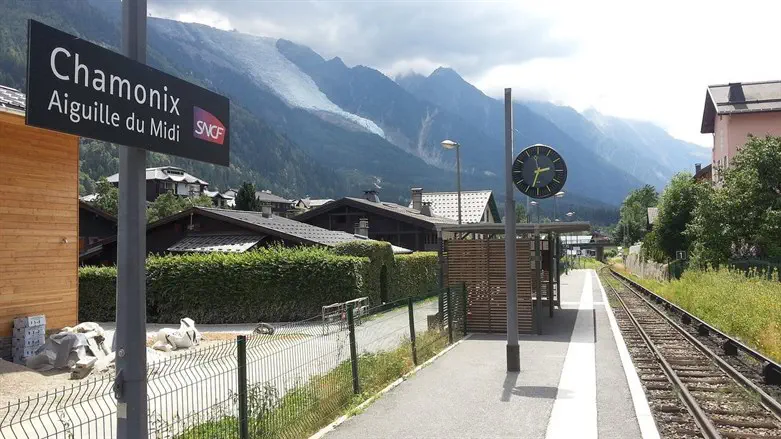
Hauts-de-France's regional transport network, ETER, has unveiled an ambitious €1 train fare initiative to rejuvenate tourism in the northern territories of France. The offer, first announced on a local French news outlet, applies to all TER (Transport Express Regional) train services between 14 stations across the region, including popular destinations such as Lille, Amiens, and Calais.
As part of the initiative, the transport operator has set aside 20,000 seats every week for the €1 fare. Notably, these are not second-class or inferior seats; passengers get the same comfort and services for a much lower price.
The sale of these affordable tickets has been planned in two phases. Since June, travel enthusiasts have been able to secure their July trips at the €1 fare. The second wave of ticket sales is set for journeys scheduled between August 1st and August 27th, and these will become available from July 25th.
Various platforms are available to purchase these tickets. These include the SNCF Connect website, the region's own TER site, and even price comparison platforms like Trainline or Omio. Additionally, tickets can also be bought directly at the train stations in the region.
This initiative is expected to significantly boost local tourism, which has taken a hard hit during the pandemic. By offering this affordable transportation option, more tourists, both domestic and international, are expected to explore the north of France, thereby pumping money into the local economy.
Nevertheless, foreign travelers who are planning a visit to the region to take part in the initiative should be aware that they may need to first submit a France ETIAS Application in advance.
ETER’s €1 train fare initiative opens the door to the lesser-known yet highly appealing attractions of northern France. The Hauts-de-France region, tucked away from the more renowned tourist tracks, is a blend of rich history, picturesque landscapes, and vibrant cultural life, all waiting to be explored at a minimal cost.
The Hauts-de-France region is also home to vibrant Jewish communities that have left an indelible mark on the region's cultural fabric. This rich Jewish heritage, spanning centuries, is intricately woven into the towns and cities of the region, including Lille, Amiens, and Calais.
Lille, the capital of the Hauts-de-France region, is known for its vibrant Wazemmes market, one of the largest markets in France. With its bustling atmosphere and stalls laden with fresh produce, regional specialties, and antique treasures, Wazemmes is more than just a marketplace. It's a social and cultural hub, reflecting the life and soul of this French city.
Lille also hosts a significant Jewish community. The Synagogue of Lille, an architectural marvel built in the late 19th century, serves as a symbol of this community's long-standing presence in the city. This synagogue, one of the oldest in France, is noted for its beautiful Moorish-style architecture.
Beyond its synagogue, Lille has been home to many prominent Jewish figures and allies, such as journalist Armand Lipman, as well as Marcel Hoffman, who, in 1942, helped over 40 Jewish children and adults escape Nazi persecution.
Similarly, other towns and cities in the Hauts-de-France region, such as Amiens and Calais, have their own unique Jewish histories. Amiens also boasts the stunning Amiens Cathedral, a UNESCO World Heritage Site.
While in Amiens, visitors should also explore the city's "floating gardens." These gardens are a labyrinth of tiny islands, separated by small canals, and can be toured by traditional flat-bottomed boats. A visit to these gardens offers a quiet respite from city life, surrounded by lush greenery and chirping birds.
The sandy beaches of Calais, the majesty of the Calais Lighthouse, and the rich maritime history encapsulated in the Museum of Lace and Fashion also make for interesting stops on the itinerary.
The €1 train fare initiative also extends to Dunkirk, a city of great historical significance. The Battle of Dunkirk during World War II is immortalized in the city's museums and memorials. However, Dunkirk also offers visitors wide sandy beaches and a chance to explore the quirky Plus Grand Carnaval du Nord.
Finally, the smaller towns and villages of Hauts-de-France have their own charm and history. From the artisanal breweries in the countryside to the quiet walking trails in Avesnois Regional Natural Park, there are numerous off-the-beaten-path experiences for the more adventurous traveler.
The €1 fare is also expected to ease commuting for local residents, providing a more affordable and eco-friendly alternative to driving. It not only reduces individual carbon footprints but also encourages the use of public transportation, thus supporting France's broader environmental sustainability goals.
In summary, the ETER’s €1 fare initiative brings to the fore the overlooked beauty and diversity of northern France. This affordable fare is an invitation to delve into the historical, cultural, and natural riches of this stunning region.